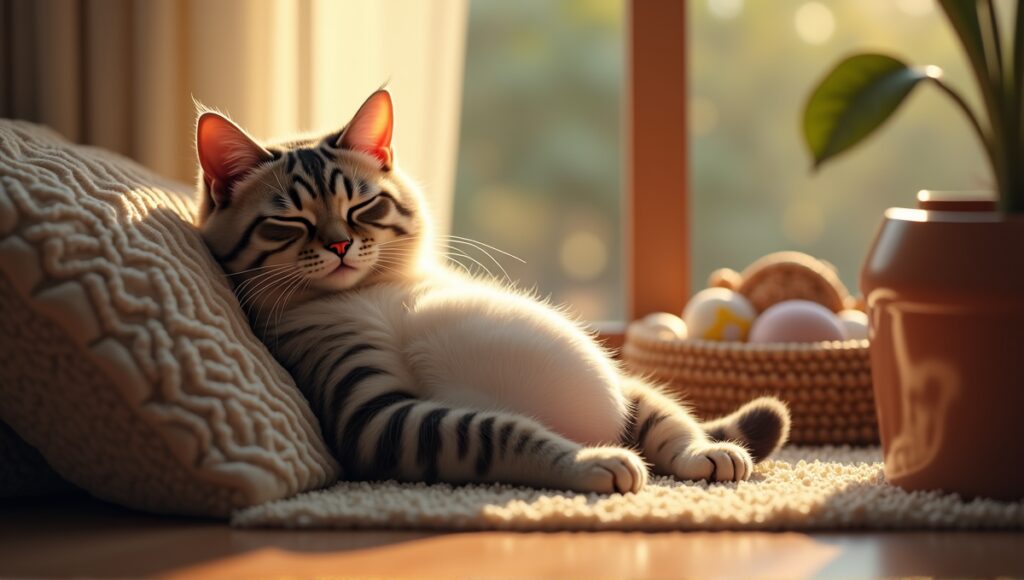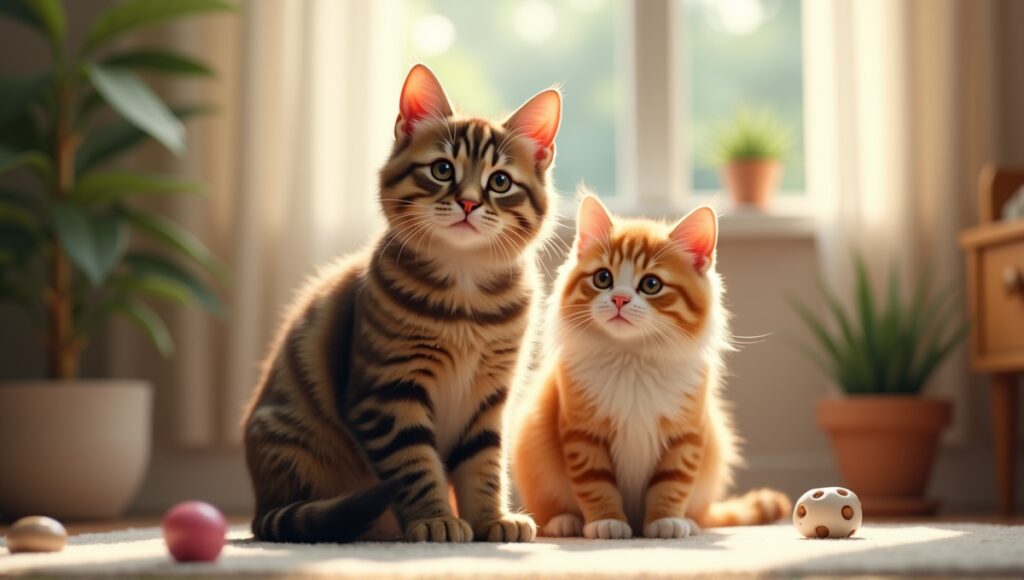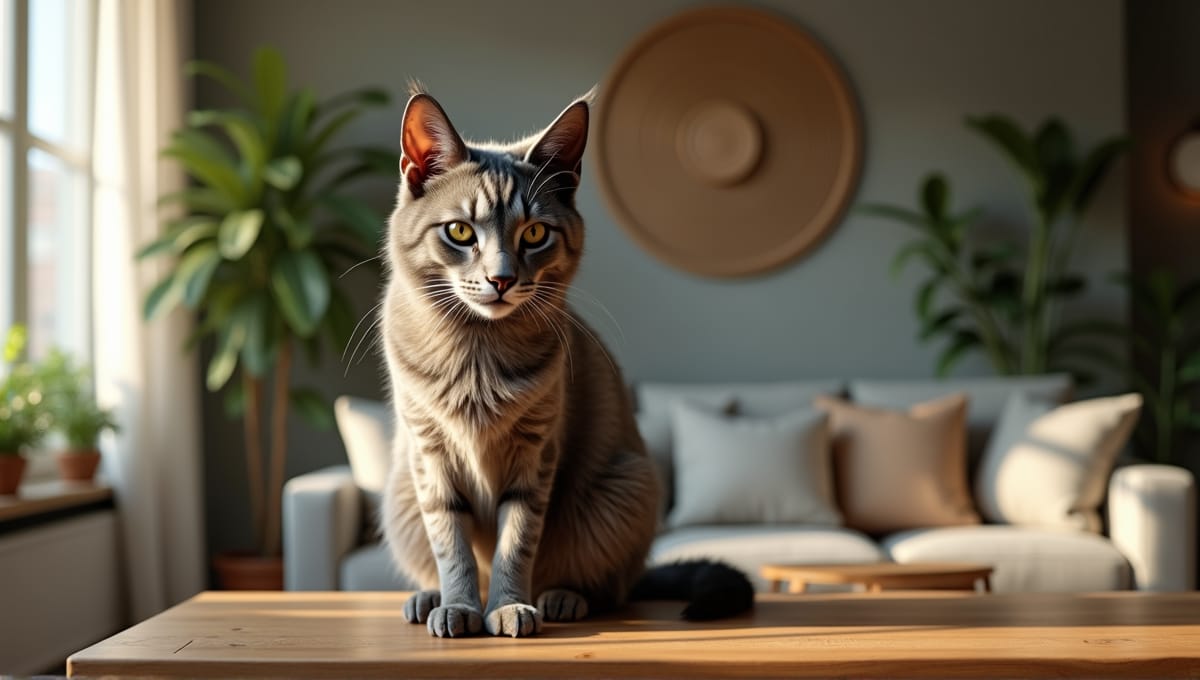Cat breeding is not a simple task. It requires knowledge, dedication, and careful planning. Having studied feline reproduction for years, I can tell you it’s a complicated journey. You’ll need to learn about heat cycles, gestation periods, and how to care for newborns. So, let’s dive into the details of responsible cat breeding.
Understanding Cat Breeding Basics

Cat breeding is a challenging task that demands expertise and patience. I’ve been a cat lover for as long as I can remember and previously worked in a pet store, so I’ve picked up plenty of knowledge about breeding cats. So, let’s cover the basics.
Cats become sexually mature at different ages:
- Female cats: 5-9 months
- Male cats: 7-12 months
That said, you should wait to breed them until they reach 18-24 months of age to ensure they are fully developed both physically and emotionally.
Female cats go into heat, which is a period during which they are ready to breed. This typically lasts for 4-7 days and occurs every 2-3 weeks during the breeding season. You’ll know a female is in heat when she becomes more vocal and loving, and she may roll on the ground or lift her rear end.
Cats are what’s known as induced ovulators, so mating with a male causes them to release eggs. The mating process itself is short, but you can repeat it several times over a few days.
Remember, there is more to breeding cats than just producing kittens. When you breed cats, you are influencing the future of the breed, so make sure you’re ready for the responsibility.
The Cat Breeding Cycle
The breeding cycle in cats is interesting. Female cats can go into heat multiple times a season, and each heat cycle lasts about a week. You’ll notice your cat is more vocal and restless during this time.
Signs a cat is in heat include:
- Excessive meowing or yowling
- More affectionate than usual
- Restless
- Raises hindquarters when you pet her
- Urinating more frequently
When a male and female cat mate, it’s a quick process. The male will mount the female and bite the back of her neck. The female may yowl loudly. This process can occur several times over the course of a few days.
It’s difficult to confirm a successful mating. Some signs the mating was successful include:
- The female cat’s heat cycle ending
- Changes in her behavior
However, the most reliable way to know is to take her to the vet.
Cats can also experience pseudopregnancy, which is when a female cat shows signs of being pregnant but isn’t actually pregnant. It’s a hormonal response, and typically, it goes away on its own.
Cat Pregnancy and Gestation

Cat pregnancy, or gestation, doesn’t last very long. Here’s what you should know:
• Normal range: 60-67 days
• Average: 63-65 days
When a cat is pregnant, you will see physical changes. Her stomach will grow larger and her nipples will become more prominent. Some cats will also experience morning sickness during the early stages of pregnancy.
Nutrition is important during pregnancy. A pregnant cat needs more calories and more protein. Therefore, I always recommend feeding pregnant cats high-quality kitten food, as this gives them the extra nutrients they need.
As the due date approaches, create a comfortable, quiet place for her to give birth. You can easily create a birthing area by lining a cardboard box with towels. Place the box in a quiet room.
Know the potential issues. Some of the most common cat pregnancy complications include:
- eclampsia (milk fever)
- dystocia (a difficult birth)
If you notice any odd behaviors or symptoms, contact the vet immediately.
The Cat Birth Process
The birth process, also known as queening, has three stages:
- First stage: 12 to 24 hours
- Second stage: Active labor
- Third stage: Placenta delivery
During the first stage, your cat may be more restless or may stop eating. She may also purr more or find her nesting box. These are all signs that labor is about to start.
Active labor is when the kittens are actually born. Each kitten will usually be born within 10 to 60 minutes of the previous one. The mother will clean and bite the umbilical cord for each kitten.
The placenta will come out shortly after each kitten. Most cats eat the placenta, which is normal and also provides nutrients.
Sometimes a kitten will come out tail-first (a breech birth). This is usually not a problem for cats, but it can sometimes require assistance.
After the birth, ensure all kittens are nursing. Keep the area calm and clean, and watch the mother closely for any signs of distress or a fever.
Caring for Newborn Kittens
Caring for a newborn kitten is a round-the-clock job. Right after birth, make sure each kitten is breathing and suckling. The initial milk, colostrum, is essential to their immune system.
Kittens must eat every two to three hours. They can’t yet regulate their body temperature, so keep them warm. You can use a heating pad on low wrapped in a towel.
Keep a close eye on the kittens’ health. They should gain weight steadily and start to open their eyes at 7-10 days. If a kitten isn’t gaining weight or appears listless, contact a vet right away.
- You can begin weaning kittens at approximately four weeks.
- Introduce them to soft kitten food mixed with kitten formula.
- Gradually reduce the amount of formula at each feeding over time.
Socialization is key to raising a well-adjusted adult cat. Handle kittens gently and frequently, and introduce them to different sounds and experiences.
Ethical Considerations in Cat Breeding

Breeding cats is a big ethical responsibility. You should breed cats with the intention of improving the breed, not just making kittens.
Responsible breeding includes genetic health testing.
- Test your breeding cats for any hereditary health issues common in their breed.
- This helps prevent passing any genetic health issues to the kittens.
Don’t overbreed a female cat.
- The best practice is breeding her no more than once per year and a maximum of 3-4 times in her life.
- This is also healthier for the mother cat.
If you end up with an accidental litter, make sure you have a plan to find good homes for all of the kittens.
- Never give kittens away for free.
- Charging a small fee reduces the likelihood a person will be irresponsible with the kitten.
For non-breeding cats, remember that spaying or neutering is the best option.
- This prevents any accidental litters and is healthier for the cat.
- As a breeder, also educate new kitten owners about the importance of spay/neuter for pet cats.
Legal and Professional Aspects of Cat Breeding
Cat breeding isn’t just a hobby – it’s a responsibility that has legal and professional implications. Many breed registries have requirements for breeders, such as health testing or limits on the number of litters the cat can have.
Some areas have licensing or permit requirements for cat breeders. Check your local laws to be sure you’re compliant. Joining professional organizations for cat breeders is smart. These organizations provide resources, networking, and often, continuing education.
Educate yourself on the best breeding practices by attending:
- cat shows
- workshops
- seminars
The world of cat breeding is constantly changing, and it’s our responsibility as breeders to stay up to date and provide the best possible care for our cats. For those interested in unique feline companions, exploring exotic cat breeds can also be an exciting venture.
In Summary
Cat breeding is a challenging task that requires expertise, dedication, and responsibility. Each aspect, from learning about the sexual maturity of cats to taking care of a newborn litter, requires close consideration.
Ethical responsibility is also important. Your job as a breeder is more than just breeding a cat; you’re also responsible for the health and well-being of the cat and its kittens. Keep in mind that breeding directly affects the lives of individual cats and the broader cat community, so always put the cats’ welfare first.






